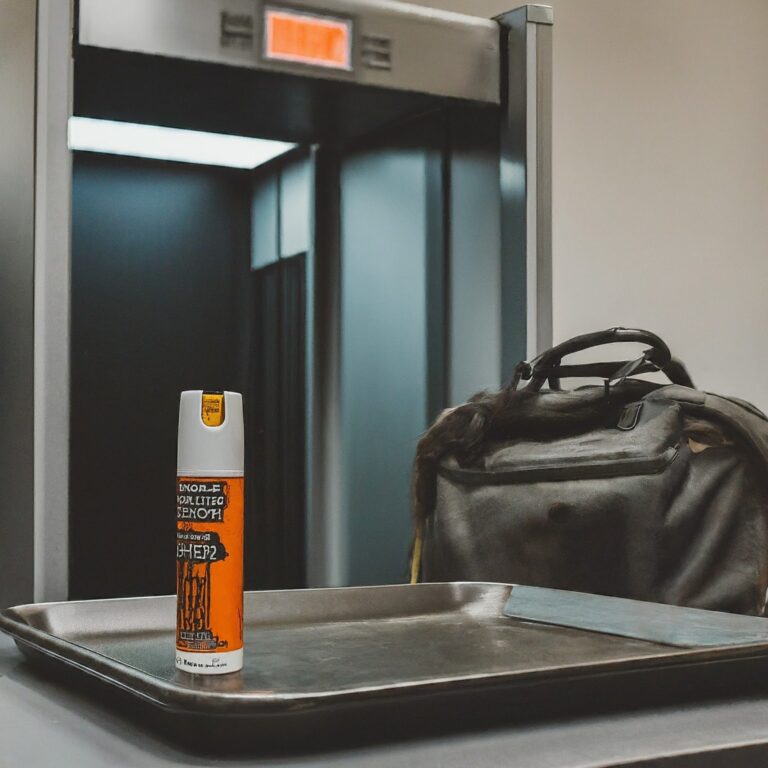How Many Schools Have Metal Detectors in the United States
In light of the increasing school safety concerns in the United States, many wonder, “How Many Schools Have Metal Detectors in the United States?” As schools across the nation grapple with the challenges of ensuring the well-being of their students and staff, using metal detectors has emerged as a potential solution to prevent weapons from entering school premises.
This article will briefly overview school safety concerns in the United States and introduce the role and prevalence of metal detectors in schools as a safety measure.
History of Metal Detectors in Schools
The history of metal detectors in schools can be traced back to the late 20th century when concerns regarding school safety began to rise. The early adoption of metal detectors was primarily driven by a desire to prevent weapons, particularly firearms and knives, from being brought onto school premises. This move was prompted by high-profile incidents that significantly impacted the public’s perception of school safety.
One such event was the 1999 Columbine High School massacre, which claimed the lives of 13 people and injured 24 others. The tragedy sparked a nationwide debate on gun control and school safety measures, leading to the implementation of metal detectors in many schools.
Another notable incident that influenced the usage of metal detectors in schools was the 2012 Sandy Hook Elementary School shooting, where 20 children and six staff members were killed. This tragedy further intensified the conversation around school security and prompted many institutions to consider the installation of metal detectors as a means of protection.
Over the years, metal detectors have become an increasingly common feature in schools across the United States, serving as a visible symbol of the ongoing efforts to address the issue of school safety. As the public continues to grapple with the complexities of this challenge, the debate around the effectiveness and necessity of metal detectors in schools remains an important topic.
Current Statistics on Metal Detectors in US Schools
Metal detectors are devices used to identify metal objects that may be carried by students, staff, or visitors entering a school. Using metal detectors in schools has become controversial due to concerns over privacy, cost, and effectiveness. This section will discuss the current statistics on metal detectors in US schools, including the number of schools with metal detectors, breakdown by school level, and regional differences in implementation.
Number of Schools with Metal Detectors
According to a 2018 National Center for Education Statistics report, 5% of public schools in the United States, or approximately 3,700 schools, reported using metal detectors. This represents a slight increase from the 4% of schools that reported using metal detectors in 2009-2010.
Breakdown by School Level
The report also provides a breakdown of metal detectors used at the school level. High schools were more likely to use metal detectors, with 9% of public high schools reporting their use, compared to 2% of middle schools and less than 1% of elementary schools.
Regional Differences in Implementation
There are regional differences in the use of metal detectors in schools. According to the report, schools in urban areas were more likely to use metal detectors than suburban or rural areas. For example, 9% of public schools in cities with populations of 50,000 or more used metal detectors, compared to 3% of schools in suburban areas and 1% in rural areas.
While using metal detectors in US schools is not widespread, it remains a topic of debate among educators, parents, and policymakers. Supporters argue that metal detectors can help deter violence and provide a sense of security, while opponents argue that they are costly, ineffective, and may create a negative school climate. As schools grapple with safety and security issues, it will be important to consider all available options, including metal detectors, thoughtfully and evidence-based.
Using metal detectors in schools has become a contentious issue over the years. While proponents argue that they can enhance safety and security, opponents point to potential negative impacts on the school environment and student experience. This section will discuss the pros and cons of using metal detectors in schools.
Pros of Using Metal Detectors in Schools
Prevention of Weapons Being Brought into Schools
One of the primary advantages of using metal detectors in schools is the prevention of weapons being brought onto school premises. Metal detectors can help identify dangerous items such as guns, knives, and other weapons before they enter the school. This can help prevent acts of violence and protect the safety of students and staff.
Increased Sense of Security for Students and Staff
Metal detectors can also create a sense of security for students and staff. Knowing that measures are in place to prevent dangerous items from entering the school can help individuals feel safer and more protected. This can be especially important in schools that have experienced violence or threats.
Cons of Using Metal Detectors in Schools
Potential Negative Impact on School Environment and Student Experience
One concern with using metal detectors in schools is the potential negative impact on the school environment and student experience. Some argue that metal detectors can create an atmosphere of fear and distrust, making students feel like they are in a prison rather than a place of learning. Moreover, using metal detectors can be seen as an invasion of privacy, undermining the trust between students and staff.
Financial and Logistical Challenges
Another significant issue with using metal detectors in schools is the financial and logistical challenges they present. Metal detectors can be costly to purchase and maintain, which can be a challenge for cash-strapped schools. Additionally, using metal detectors requires additional staff to operate and monitor them, which can be a logistical challenge for schools with limited resources.
Using metal detectors in schools is controversial, with pros and cons to consider. While metal detectors can prevent the entry of dangerous weapons and create a sense of security, they also have the potential to impact the school environment and student experience negatively. Moreover, metal detectors’ costs and logistical challenges must be considered. Ultimately, the decision to use metal detectors in schools should be made on a case-by-case basis, considering each school community’s unique needs and circumstances.
Alternatives and Complementary Measures to Metal Detectors
While metal detectors can contribute to school safety, there are additional alternatives and complementary measures that schools can consider implementing. These measures include security cameras and monitoring systems, school resource officers and security personnel, and mental health and counseling services for students. This section will discuss each of these measures in detail.
Security Cameras and Monitoring Systems
One alternative or complementary measure to metal detectors is using security cameras and monitoring systems. These systems can help deter criminal activity, monitor potential safety threats, and provide valuable evidence in the event of an incident.
- Benefits: Security cameras and monitoring systems can cover a wider area than metal detectors, providing surveillance inside and outside the school building. Moreover, they are less intrusive and can operate without disrupting the daily flow of students and staff.
- Limitations: While security cameras can serve as a deterrent, they may not prevent acts of violence from occurring. Additionally, constant monitoring may raise concerns about privacy and the potential for misuse of the recorded footage.
School Resource Officers and Security Personnel
Another alternative or complementary measure to metal detectors is the presence of school resource officers (SROs) and security personnel. These trained professionals can help maintain order, address potential threats, and provide a sense of security for students and staff.
- Benefits: SROs and security personnel can build relationships with students, promoting a positive school environment and facilitating communication about potential safety concerns. They can also respond quickly to incidents, providing immediate assistance and support.
- Limitations: The presence of SROs and security personnel may only be feasible for some schools due to budget constraints. Additionally, there can be concerns about the potential for excessive force or the criminalization of minor infractions, especially for students of color and those with disabilities.
Mental Health and Counseling Services for Students
Promoting mental health and counseling services for students can be another essential measure in ensuring school safety. Schools can prevent potential safety concerns from escalating by addressing students’ emotional and behavioral needs.
- Benefits: Mental health and counseling services can help identify and address the root causes of potential safety threats, such as mental health issues, substance abuse, or trauma. These services can foster a supportive school environment and promote healthy student coping mechanisms.
- Limitations: Providing mental health and counseling services may require significant funding and resources, which may not be readily available in all schools. Additionally, a stigma can be associated with seeking help for mental health concerns, leading some students to avoid utilizing these services.
Schools have various alternatives and complementary measures to metal detectors at their disposal. Security cameras and monitoring systems, school resource officers and security personnel, and students’ mental health and counseling services can all contribute to a safe and secure learning environment. Each of these measures has its benefits and limitations, and schools should carefully consider their unique needs and resources when deciding which approaches to implement.
Technological Advancements in Metal Detection Systems
In the future, metal detection systems are expected to become more sophisticated, accurate, and user-friendly. Technology advancements will improve the sensitivity and speed of metal detectors, making them more effective in identifying potential threats.
Smart Metal Detectors: Machine learning and artificial intelligence could contribute to developing “smart” metal detectors that distinguish between harmless items and dangerous weapons, reducing false alarms and increasing overall efficiency.
Integration with Other Security Systems: Metal detectors may become more integrated with other security systems, such as facial recognition and biometric scanners. This integration would provide a more comprehensive approach to school safety, enabling schools to monitor the movement of individuals within the premises and further enhance security measures.
Changes in School Security Policies and Practices
As school security continues to evolve, changes in policies and practices that reflect the shifting landscape are expected. Schools may adopt a more holistic approach, focusing on physical measures like metal detectors, promoting mental health, and fostering a positive school culture.
- Holistic Approach to Security: Providing counseling services, implementing anti-bullying programs, and creating opportunities for open communication between students, teachers, and staff could become more common in schools. These efforts would contribute to a balanced approach to security, addressing the root causes of potential safety threats.
- Proactive Measures: Schools may become more proactive in identifying and addressing potential security risks before they become serious issues. This could involve closer collaboration with local law enforcement agencies, conducting regular threat assessments, and training staff and students on safety protocols and emergency response procedures.
- Community Involvement: In the future, schools may increasingly involve the community in their security efforts, seeking input from parents, local businesses, and other stakeholders. This collaboration could lead to the development of innovative and effective security strategies tailored to the unique needs of each school community.
The future trends in school security and metal detectors will likely include technological advancements in detection systems and a shift in security policies and practices. These changes are expected to contribute to a more comprehensive and proactive approach to ensuring the safety of students and staff in educational institutions.
Conclusion
The current state of metal detectors in US schools has become integral to school security strategies. These devices aim to enhance security by preventing the entry of weapons onto school premises. The increasing number of school shootings and incidents of violence has driven the implementation of metal detectors.
However, the ongoing debate surrounding the effectiveness of metal detectors in preventing school violence highlights the need for a balanced approach to school safety. This approach should focus on physical security measures like metal detectors and address the root causes of potential safety threats, such as mental health issues and fostering a positive school culture.
Ultimately, as technology advances and new security strategies emerge, schools must adapt and implement a comprehensive approach to ensure the safety of students and staff.








One Comment